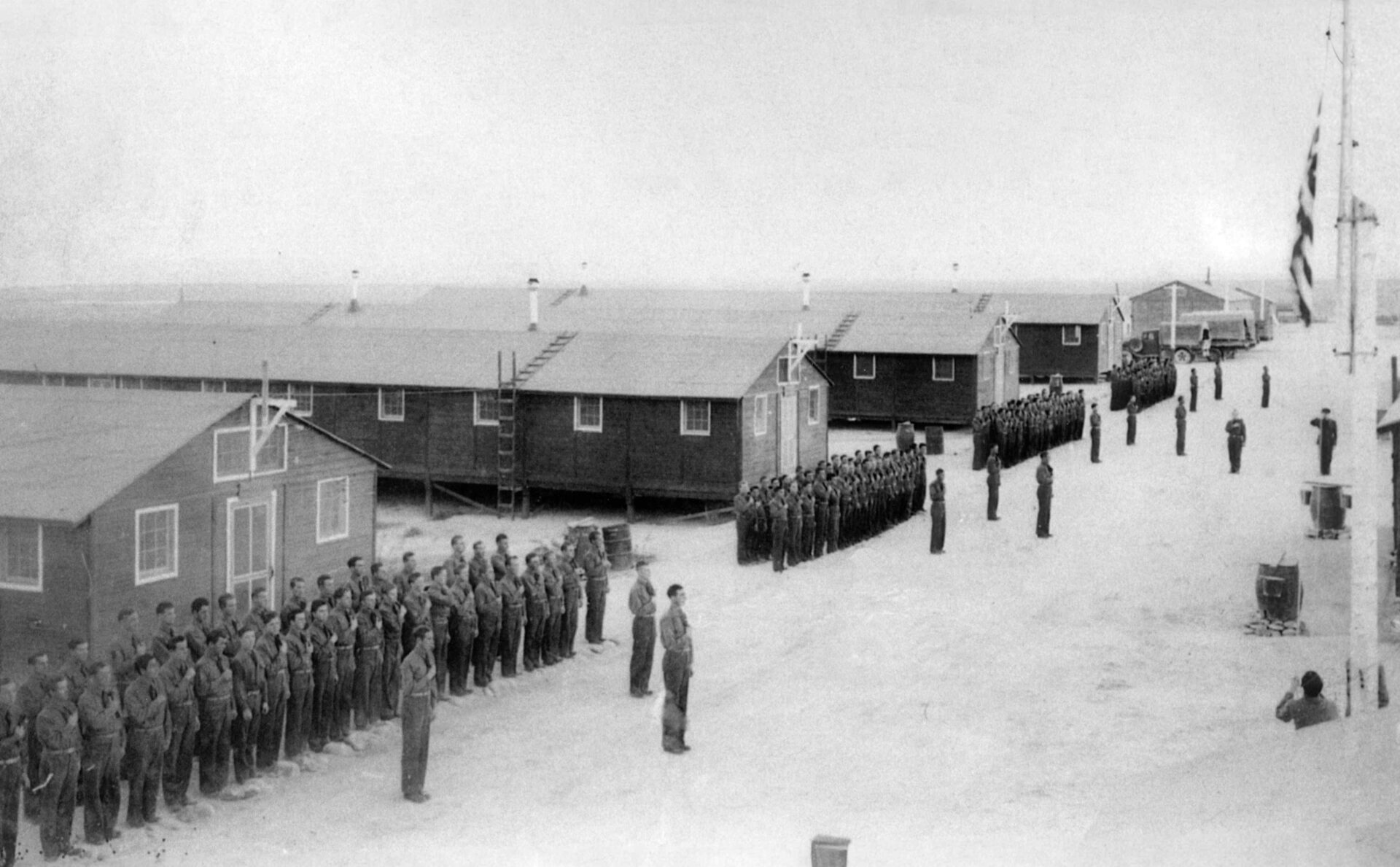Some information may be outdated.
The 1943 incarceration of Japanese-Americans across the nation and Moab’s camp in the Dalton Wells area came after its original use: a Civilian Conservation Corps (CCC) Camp – DG-32.
This week, we continue our exploration of the Fall/Winter 1993 Issue of the Canyon Legacy and Bruce D. Louthan’s work exploring Dalton Wells’ history as a CCC Camp, diving into the activities undertaken outside of service hours at the camp before 1943.
Recreation at Dalton Wells
When the CCC residents of DG-32 were not occupied with project work, recreation and educational activities filled their time. The recreation hall had both pool and ping pong tables and lively tournaments were held. These tables could be cleared away lo show movies or for dances hosted by the camp. There was also a library with current periodicals and a small permanent collection; books could also be ordered from the circulating library based at Fort Douglas. The photographic darkroom was available for recreational use of the enrollees as well as work and educational classes. Availability of electricity made it possible for enrollees to listen to radio, play cards, read, and Mite letters at night. Occasionally the different barracks offered plays and the local Moab band might visit to perform.
Outside, the playing field served for baseball as well as soccer and possibly football and there was a basketball hoop. The camp baseball team was undefeated in competition with local towns during the first 6-month period of its existence. The location near Arches National Monument (now, Park) offered a unique opportunity for viewing scenic wonders and a hiking club was formed to go exploring in the area every week. Religious activities were offered, and chaplains of Protestant and Catholic faiths provided services, usually on Sunday night.

Educational Activities
Educational offerings were a staple of the off-work hour offerings in CCC camps, and each one was provided with an Educational Advisor (EA). Even before the EA had arrived at Dalton Wells. the technical staff had initiated the first educational programs and some continued to help after his arrival. Technical personnel would have included engineers and surveyors, medical personnel, foresters and range specialists, bookkeepers, and administrators, mechanics and blacksmiths, and military officers. The LEMs may have provided some of this technical expertise.
Vocational classes included auto mechanics, diesel engines, blueprint reading, photography, blacksmithing, mineralogy, amateur radio, forestry, aeronautics, and business law. Many of these had the advantage of facilities and equipment for immediate practical application right in the camp or work setting and after hours.
The EA was mostly involved in developing and teaching a curriculum of high school equivalent courses since many of the enrollees had not finished high school. These included composition, citizenship, CCC administration, glee club, cooking, and guidance. These classes were taught in the classroom of the education building. One assumes that there was some reason for including a class in CCC administration in this offering. No math was mentioned but a later enrollee took an algebra class. Since the enlistment period was only 6 months, the intent was likely to encourage continuation and completion of graduation requirements after returning home.
However, for those with preparation the “equivalent of a college course (was] offered in Psychology and Journalism.” No doubt to enlist office help, a class in typing was also offered and had numerous takers.
The work schedule of the CCCs was only an eight-hour day with a half hour for lunch. For those not working out of spike camps. Returning at four o’clock each afternoon to base camp and eating early at 5 to 5:30 pm allowed lots of discretionary time in the evenings.
The educational activities offered variety and new opportunities for young men whose ambitions had been stymied. These would have been especially successful for camps some distance from towns. Those installations closer to social distractions must have had less success in this realm. Still remote as Dalton Wells was, one enrollee at DG-32 remembers that “most enrollees didn’t take educational courses.”
For the full issue, visit moabmuseum.org/canyon-legacy. And stay tuned for future columns on the CCC Camp at Dalton Wells. “A Moab Prison Camp: Japanese American Incarceration in Moab” is on display through June 29, 2024, and features historic photos of Dalton Wells as a CCC Camp.
The Moab Museum is dedicated to sharing stories of the natural and human history of the Moab area. To explore more of Moab’s stories and artifacts, find out about upcoming programs, and become a Member, visit www.moabmuseum.org.
Appreciate the coverage? Help keep local news alive.
Chip in to support the Moab Sun News.





